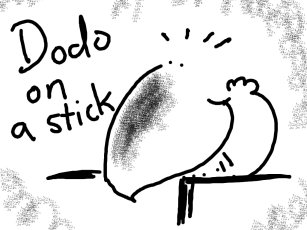What I learnt todae
I learnt that a financial statement is
1) Income Statement
2) Cash Flow
3) Balance Sheet
Income statement shows sales revenue, expenses dividends, interests on bonds, tax
i.e. howmush moola is left =)
The eventual amount is the net income or net earnings. This is the proverbial bottomline.
The net earnings becomes the first line of the cash flow.
Cash flow shows
1) Financing (raising cash)
2) Operations (making cash)
3) Investment (future growth)
Looking at this statement, you usually want the company to get cash from ops rather than Financing (as rasing cash actually dilutes the value of your share)
So if your company is driving growth through cash obtained from operations, then it is healthy growth!
Also note that Financing can be negative, it means the shares are being bought back to keep the value per share high
It also shows cash and equivalents at the end. this becomes the Assets in he balance sheet.
Following this is the balance sheet.
It essentially shows equity, assets and liabilities
Assets also include inventory, so if you are conservative you should not include them in your calculations.
Cash and equivalents + Accounts Receivable + inventory form current assets
Note that for liabilities there is current as well as long term debt.
For value investors, it is important to note that the current assets exceed current liabilities by a comfortable amount, as this is indicative of the cash flow of the company (failing which the company may have to sell stocjks to raise funds.)
It also shows the shareholder's equity, which is the book value of the company.
Note thatfor long term debt you want to see if it is sizable as the interests could reduce profits.
Also for long term debt, you should look at the net earnings as they are give an indication of how long the company will take to clear its debt.
P/E Price per earnings per share.
Divide earnings by shares, then divide Price of a shre by this ratio.
This tells you how long it will take for you to "earn" back your investment (your investment being the share price)
A high P/E is generally bad you want less than 12
Though for some this represents good sentiment (for speculators)
Also ROE return on equity, net earnings divided by equity per share. Shows the returns based on equity.
1) Income Statement
2) Cash Flow
3) Balance Sheet
Income statement shows sales revenue, expenses dividends, interests on bonds, tax
i.e. howmush moola is left =)
The eventual amount is the net income or net earnings. This is the proverbial bottomline.
The net earnings becomes the first line of the cash flow.
Cash flow shows
1) Financing (raising cash)
2) Operations (making cash)
3) Investment (future growth)
Looking at this statement, you usually want the company to get cash from ops rather than Financing (as rasing cash actually dilutes the value of your share)
So if your company is driving growth through cash obtained from operations, then it is healthy growth!
Also note that Financing can be negative, it means the shares are being bought back to keep the value per share high
It also shows cash and equivalents at the end. this becomes the Assets in he balance sheet.
Following this is the balance sheet.
It essentially shows equity, assets and liabilities
Assets also include inventory, so if you are conservative you should not include them in your calculations.
Cash and equivalents + Accounts Receivable + inventory form current assets
Note that for liabilities there is current as well as long term debt.
For value investors, it is important to note that the current assets exceed current liabilities by a comfortable amount, as this is indicative of the cash flow of the company (failing which the company may have to sell stocjks to raise funds.)
It also shows the shareholder's equity, which is the book value of the company.
Note thatfor long term debt you want to see if it is sizable as the interests could reduce profits.
Also for long term debt, you should look at the net earnings as they are give an indication of how long the company will take to clear its debt.
P/E Price per earnings per share.
Divide earnings by shares, then divide Price of a shre by this ratio.
This tells you how long it will take for you to "earn" back your investment (your investment being the share price)
A high P/E is generally bad you want less than 12
Though for some this represents good sentiment (for speculators)
Also ROE return on equity, net earnings divided by equity per share. Shows the returns based on equity.




0 Comments:
Post a Comment
<< Home